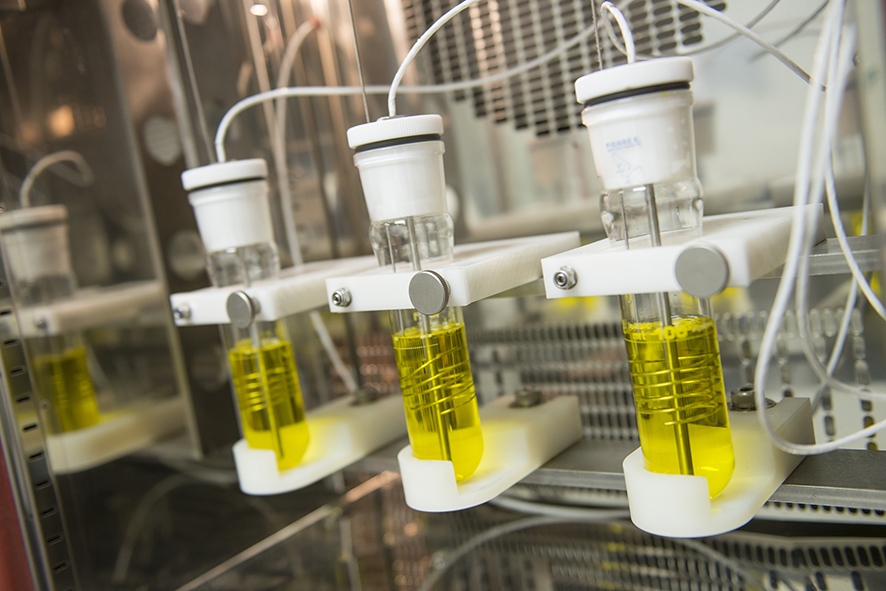How to Choose the Best Heat Transfer Fluid for Industrial Applications
Wiki Article
The Duty of Heat Transfer Liquid in Enhancing System Efficiency and Security
In the ever-evolving landscape of industrial processes, warm transfer fluids (HTFs) emerge as pivotal elements in enhancing both system performance and safety. These specialized liquids, understood for their remarkable thermal conductivity and controlled viscosity, enable efficient warmth exchange, which is crucial for structured procedures.Recognizing Warmth Transfer Fluids
Heat transfer liquids, typically considered the lifeline of thermal administration systems, play a pivotal function in managing temperature level across various industrial applications. These fluids are necessary in processes where warmth should be either absorbed or dissipated to preserve optimal operating conditions. Industries such as chemical handling, power generation, and manufacturing count on heat transfer liquids to guarantee tools operates successfully and safely. By assisting in the transfer of thermal energy, these liquids help in protecting against overheating, hence prolonging the life-span of machinery and reducing downtime.The option of an ideal warmth transfer liquid is critical to the success of a thermal administration system. In recap, a thorough understanding of warmth transfer liquids is crucial for enhancing system performance, ensuring operational safety, and achieving cost-effective thermal management remedies.
Trick Feature of HTFs

The particular warmth capacity of an HTF defines the quantity of warmth energy required to change its temperature, impacting just how effectively the system can respond to temperature variants. The boiling and freezing points of HTFs additionally play a critical role, particularly in systems revealed to extreme temperatures, making certain fluid security and preventing stage modifications throughout procedure.
Enhancing System Efficiency
To boost system performance with warm transfer fluids (HTFs), it is vital to incorporate an extensive strategy that considers both liquid residential or commercial properties and system design. The selection of an ideal HTF is crucial, as its thermal conductivity, thickness, and particular heat capacity straight impact the effectiveness of warm exchange. High thermal conductivity guarantees rapid warmth transfer, while ideal viscosity promotes smooth circulation with the system, reducing power usage. Additionally, a high specific warm ability permits the fluid to shop and move more thermal power, improving total system efficiency.Just my sources as essential is the layout of the heat transfer system itself. Designers have to guarantee that parts such as heat exchangers, pumps, and piping are designed to complement the residential properties of the chosen HTF. For example, the surface and product of warmth exchangers ought to be maximized to take full advantage of warmth transfer efficiency. The integration of advanced innovations, such as variable speed pumps and wise tracking systems, can dramatically boost the responsiveness and flexibility of the system to changing operational problems.
Boosting Operational Safety And Security
Making certain operational security in warm transfer systems requires a precise emphasis on both the buildings of warmth transfer liquids (HTFs) and the style and maintenance of the entire system. HTFs must possess thermal security, low flammability, and suitable viscosity to minimize risks such as leakages, fires, and system malfunctions. Choosing the appropriate HTF is crucial as it determines the system's capability to manage temperature level changes without jeopardizing safety.The layout of the system should include redundancies and fail-safes to take care of prospective risks efficiently. This consists of the combination of safety shutoffs, stress relief tools, and temperature level monitoring systems to detect and resolve abnormalities quickly. Regular upkeep is necessary to make sure that discover this all components, consisting of pumps, pipes, and seals, are operating properly and are devoid of wear or deterioration, which could bring about harmful leakages or failures.
Additionally, personnel in charge of the operation and upkeep of heat transfer systems need to be appropriately learnt security procedures and emergency reaction procedures. Constant training programs and safety drills can substantially minimize the probability of crashes, making certain a safer working setting. Ultimately, a detailed strategy to safety-- including liquid selection, system style, and labor force training-- is indispensable for optimal operational protection.
Industry Applications of HTFs
Commonly made use of throughout various industries, warm transfer liquids (HTFs) play a critical role in improving the effectiveness and integrity of thermal monitoring check my site systems. In the chemical industry, HTFs are essential for preserving specific temperature levels throughout reactions, ensuring product consistency and quality. They help with warm exchange processes in reactors, condensers, and heat exchangers, thus enhancing energy use and lessening waste.In the oil and gas market, HTFs are utilized in both upstream and downstream procedures. They handle temperature level in boring operations and enhance efficiency in refining processes by giving stable thermal problems. This results in reduced downtime and boosted safety and security, specifically in critical procedures such as purification and fracturing.
The eco-friendly power field likewise benefits considerably from HTFs, particularly in focused solar energy (CSP) plants. Right here, HTFs transfer captured solar power to power generators, allowing effective electrical power generation. The pharmaceutical industry counts on HTFs for accurate temperature control in both synthesis and storage space, making sure product efficiency and safety and security.


In addition, the food and beverage field uses HTFs for pasteurization, sterilization, and food preparation processes, enhancing both item safety and manufacturing efficiency. Throughout these industries, HTFs act as important components in preserving optimal functional efficiency and security.
Verdict
Warm transfer liquids are necessary in improving commercial system efficiency and security by supplying high thermal conductivity, optimal thickness, and thermal stability. Appropriate option and maintenance of HTFs improve warmth exchange effectiveness, therefore improving functional effectiveness. The reduced flammability of these liquids is essential for lessening risks and guaranteeing secure operations. Comprehensive personnel training and routine upkeep better support the dependability and performance of industrial processes, solidifying the essential role of HTFs in diverse applications.Report this wiki page